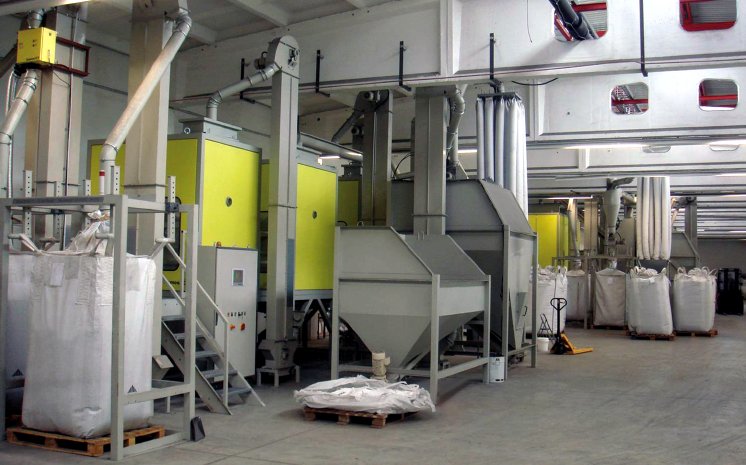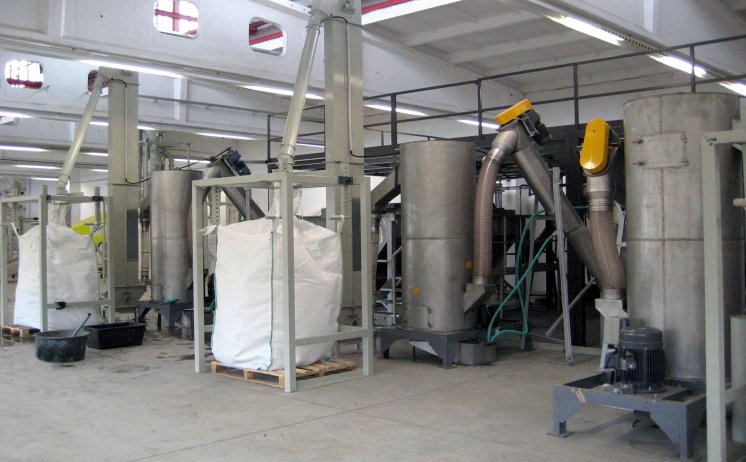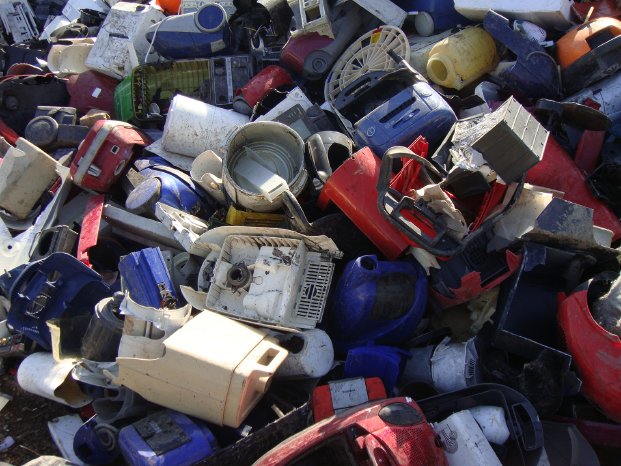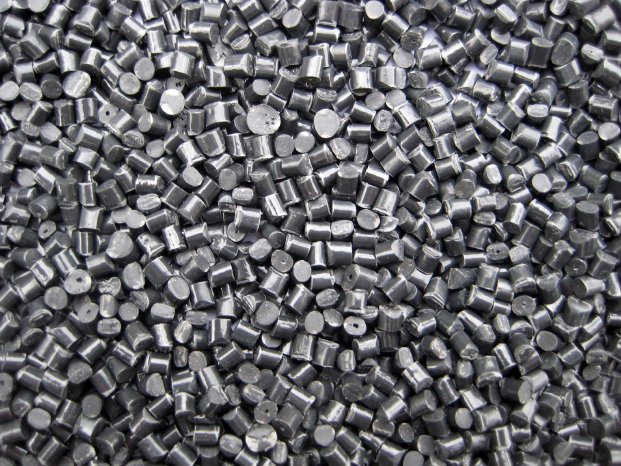Large quantities of mixed plastics arise when recycling electronic waste (WEEE – Waste Electrical and Electronic Equipment) or automotive shredder residue (ASR). The materials contained here, such as ABS, PS and PP for example, are so heavily contaminated by other plastics, wood, elastomers and metals that further processing is not possible without additional treatment.
The hamos KRS recycling system separates out pure plastics from WEEE or pre-treated ASR fractions. The equipment runs entirely automatically und has been designed for three-shift operation. The processing method of the hamos KRS system is so flexible that the most widely different mixtures of plastics can be separated.
The previously broken up mixture of plastics, having been freed from large metal pieces, is classified in a first stage of the treatment process and the light fraction separated out. The plastic fractions are separated from each other according to their specific weight in the subsequent wet separation stage. The ABS-PS and PE-PP concentrates recovered here are then mechanically and thermally dried.
hamos KWS series electrostatic separators separate the remaining metals and other conductive contamination, such as for example rubber and wood, in the subsequent dry separation stage. Downline hamos EKS electrostatic separators convert the mixed plastics fractions, consisting of ABS-PS or PE-PP mixtures, into clean single fractions.
Further separation of rubber and elastomer particles by means of a hamos RSS series separator provides an additional increase in the purity of the end product. When needed, even more specific light coloured plastics fractions can be produced by using optoelectronic sorting equipment.







